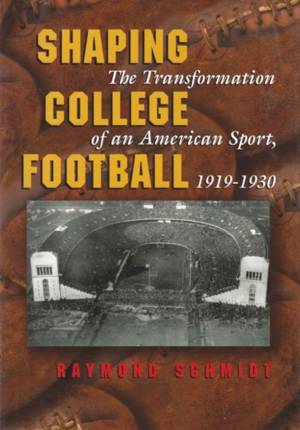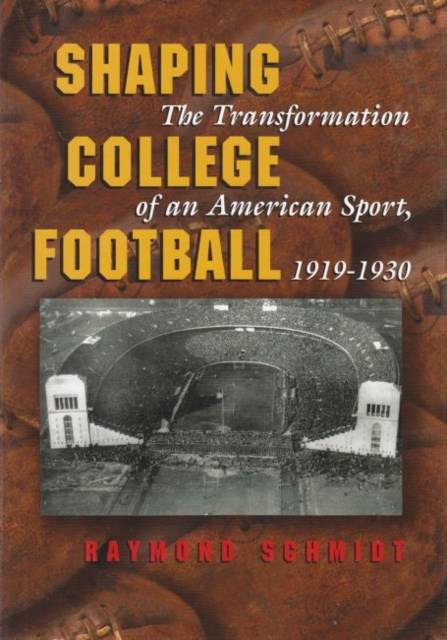
- Retrait gratuit dans votre magasin Club
- 7.000.000 titres dans notre catalogue
- Payer en toute sécurité
- Toujours un magasin près de chez vous
- Retrait gratuit dans votre magasin Club
- 7.000.000 titres dans notre catalogue
- Payer en toute sécurité
- Toujours un magasin près de chez vous
41,95 €
+ 83 points
Description
Raymond Schmidt examines the many factors that were a part of college football's reshaping in the 1920s as the universities became dependent upon the revenue being generated by football, and the sport increasingly became identified as a commercialized, big business activity; all of it being played out against a backdrop of struggle between the academic and athletic factions over control of intercollegiate sport's place in the lives of the students and the university community.
This is the most detailed examination ever undertaken of college football's "Golden Era," and the topics discussed range from the shift of power away from the game's pioneering schools, through the real evolution of forward passing, to stadium building and the decade-long struggle over the game's growing over-emphasis that culminated in the legendary Carnegie Report of 1929. Including chapters on college football's class-oriented opposition to professional football during the decade, the rise of the sport at the Catholic colleges and the historically Black colleges, and some of the major scandals and disputes involving the universities, Shaping College Football also contributes to the study of sport and culture.Spécifications
Parties prenantes
- Auteur(s) :
- Editeur:
Contenu
- Nombre de pages :
- 316
- Langue:
- Anglais
- Collection :
Caractéristiques
- EAN:
- 9780815608868
- Date de parution :
- 18-06-07
- Format:
- Livre relié
- Format numérique:
- Genaaid
- Dimensions :
- 183 mm x 261 mm
- Poids :
- 730 g







